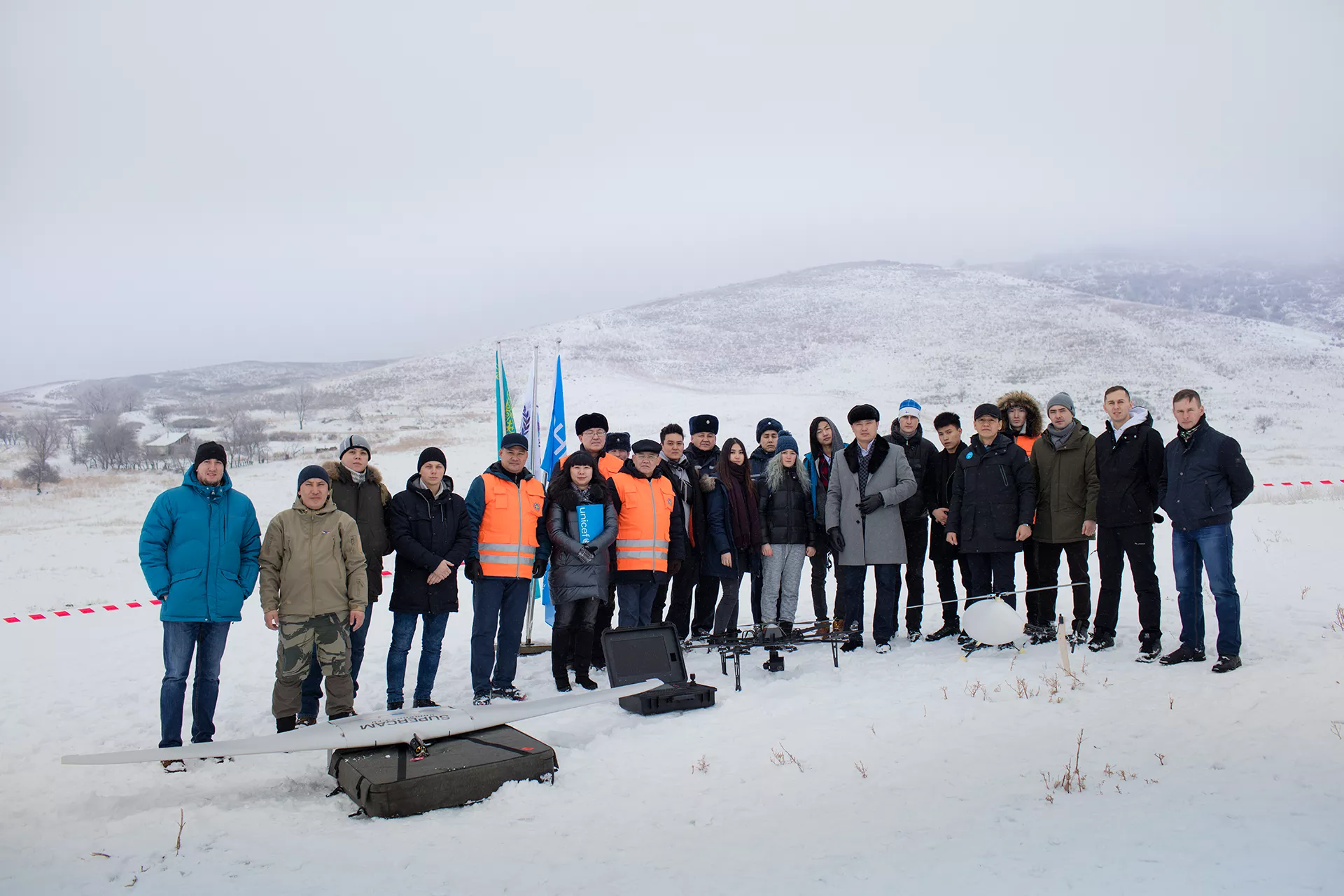China-Kazakhstan-UNICEF South-South Cooperation for Children
UNICEF is facilitating the exchange of ideas and knowledge on drone-based solutions for humanitarian disasters

- Available in:
- 中文
- English
Unmanned Aerial Vehicles (UAVs), or drones, have huge potential to help responses to humanitarian emergencies. But developing drone-based systems and applying them to disasters and emergency situations is not straightforward. As part of its work in South-South Cooperation, UNICEF is facilitating the exchange of ideas and knowledge between Kazakhstan and China - two countries that are developing drone-based solutions for humanitarian disasters.
On 12 June, UNICEF in collaboration with partners held a session between Kazakhstan and China to share knowledge on managing emergencies and reducing the risk of disasters, and how UAVs can be used in these situations - all in the best interests of children. In light of the COVID-19 pandemic the session was held online, proving that South-South cooperation can continue even when travel can’t.
“Both China and Kazakhstan – like many countries around the world – are not spared from natural disasters, and these disasters affect economic and social development, children’s health, education and development”.
Kazakhstan and China are both exploring how drones can be used in emergency situations. In 2018, UNICEF Kazakhstan and the Government of Kazakhstan established two drone “testing corridors”. The corridors are experimental areas for testing the use of drone technologies for search and rescue operations, mapping floods, establishing communications networks and mapping wildfires. It’s not just about the technology, either – the project also helps develop an understanding of the regulatory and legal systems that will be needed to allow drones to be used in emergency situations. The project supports open source solutions that can be scaled. China has significant experience in using UAVs for disaster monitoring, communication during disasters, search and rescue and post-disaster assessments.
“The Government of China’s experience in public-private partnership in emergency preparedness and response is particularly informative for the continuation of the project in Kazakhstan.”
Government partners from the two countries attended, including representatives from the respective ministries responsible for managing emergency situations, and officials from 17 regions and local emergency departments from Kazakhstan. Participants discussed results and lessons learned from the use of UAVs in emergencies. One representative from the National Disaster Reduction Center of China (NDRCC) shared how the use of UAVs fits into the broader disaster emergency management approach, and how China has developed a range of partnerships with UAV companies to develop a nationwide network to allow for a rapid response. A representative from Kazakhstan’s Center for Emergency Situations and Disaster Risk Reduction (CESDRR) shared their experience of strengthening the capacities of emergency staff in the use of drones, and engaging companies in test flights. A representative from Kazakhstan’s Emergency Committee also shared insights from the development of emergency preparedness and disaster risk reduction in Kazakhstan.
"This virtual session provides a good platform for disaster management personnel and technical experts on both sides to focus on the application and practice of UAV technology. It also helped accelerate realizing the sustainable development goals through disaster risk reduction in the best interest of children.”
This cooperation is in its early stages, with a promising future. A potential follow-up session will focus on how public-private partnerships can improve the use of drones for emergency response, and will engage with private sector partners from both countries.
Sharing knowledge is a core part of UNICEF’s work in South-South cooperation – whether through ‘traditional’ approaches like international or regional conferences and network meetings, or more innovatively through virtual sessions, especially in the context of COVID-19. The objective is to facilitate collaboration on issues of common interest to accelerate achievement towards the Sustainable Development Goals for children.
In addition to the drone testing corridors in Kazakhstan, UNICEF has also launched testing corridors in Malawi (in 2017) and Sierra Leone (in 2019). Another project in Vanuatu explores how drones can be used to deliver life-saving materials and medical supplies. The African Drone and Data Academy, with its first campus in Malawi, was initiated by UNICEF and partners to equip young Africans with the skills needed to join the new technology workforce and contribute to their communities’ economic and social development. You can find out more about these projects here.

